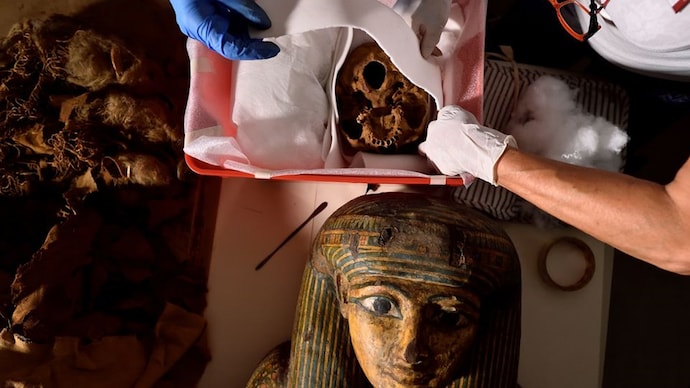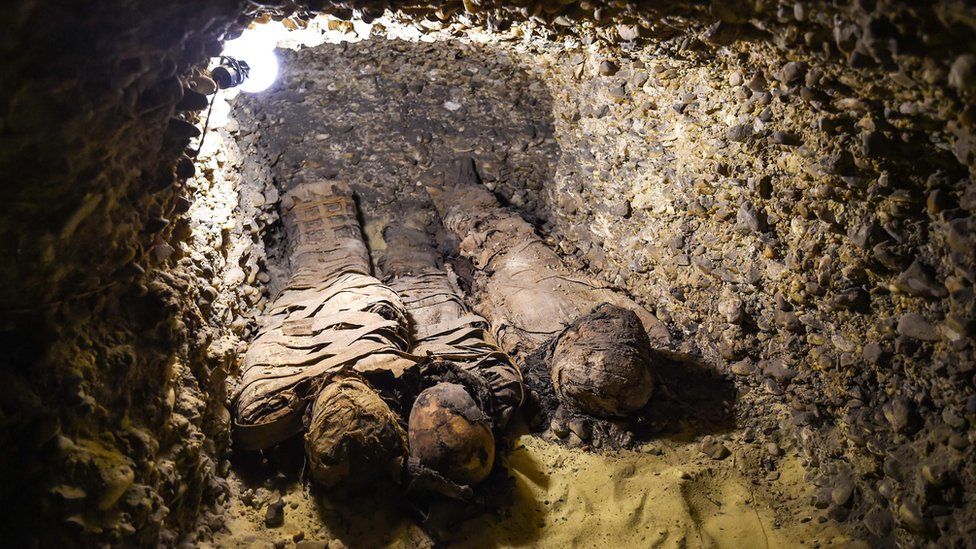The discovery of remains from the Old Kingdom shows the advancement in preserving bodies going as far back as 4,000 years.

Mummification is the process of embalming or treating the dead body. (Representative Image)
By India Today Web Desk: Egypt has always remained a source of the mystic with its age-old pyramids, mummified pharaohs and ancient culture. However, a new discovery could lead to an overhaul of its history. Researchers speculate that the process of mummification may have been carried out in ancient Egypt over 1,000 years earlier than previously thought.
According to a documentary series that followed archaeologists during the excavation season in Egypt, evidence suggests that the process may have pre-dated the estimates. The documentary series features the investigation and analysis of the tomb in the necropolis at Saqqara, which belonged to Khuwy, a relative of the royal family.
The remains of the royal nobleman were discovered in 2019 and is believed to be older than the initial assessment and could even be one of the oldest mummies ever discovered. The remains are dated to be from the Old Kingdom and the process shows their advancement in preserving the bodies going as far back as 4,000 years.
“If this is indeed an Old Kingdom mummy, all books about mummification and the history of the Old Kingdom will need to be revised,” Professor Salima Ikram, head of Egyptology at the American University in Cairo, told The Observer. She added that the development will change the understanding of the evolution of the process of mummification.
The new discovery will not only raise questions over the process, but also the availability and use of materials of that era, their origins, and the trade routes associated with them.
Ikram, who features in the documentary series, Lost Treasures of Egypt, told The Observer, “Until now, we had thought that Old Kingdom mummification was relatively simple, with basic desiccation not always successful no removal of the brain, and only occasional removal of the internal organs. Indeed, more attention was paid to the exterior appearance of the deceased than the interior. Also, the use of resins is far more limited in the Old Kingdom mummies thus far recorded. This mummy is awash with resins and textiles and gives a completely different impression of mummification.”

The documentary series will go on air from November 7.
According to the Smithsonian, mummification is the process of embalming or treating the dead body in which the ancient Egyptians would remove all moisture from the body, leaving only a dried form that would not easily decay. Religiously symbolic, it was required to preserve the dead body in as life-like a manner as possible. The technique was so precise and successful that the remains have remained in a good state for over 4,000 years.

Researchers had recently succeeded in processing mummy samples, estimated to be between 2,023 and 2,797 years old, and creating predictable faces. Scientists used whole-genome sequencing data to predict each mummy’s ancestry, pigmentation, and face morphology. They found that their ancestry was more similar to the modern Mediterranean and Middle Eastern individuals than modern Egyptians.
The facial complexion on the mummies was predicted to be light brown, with dark eyes and hair and no freckles.








